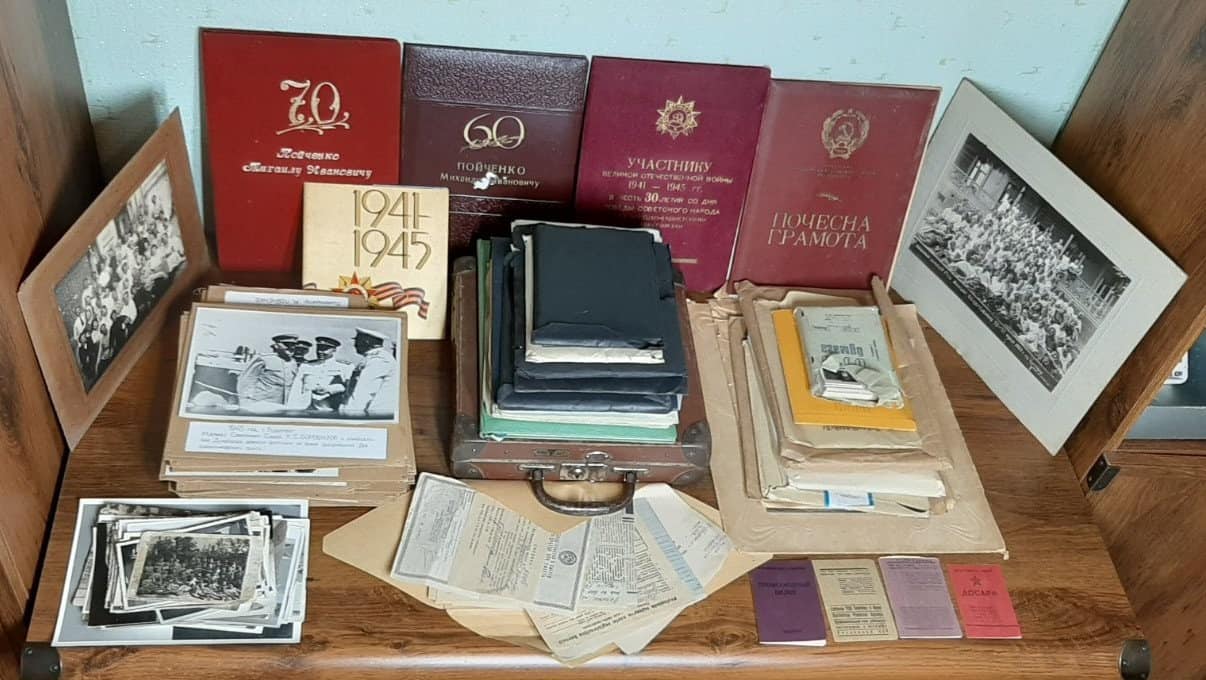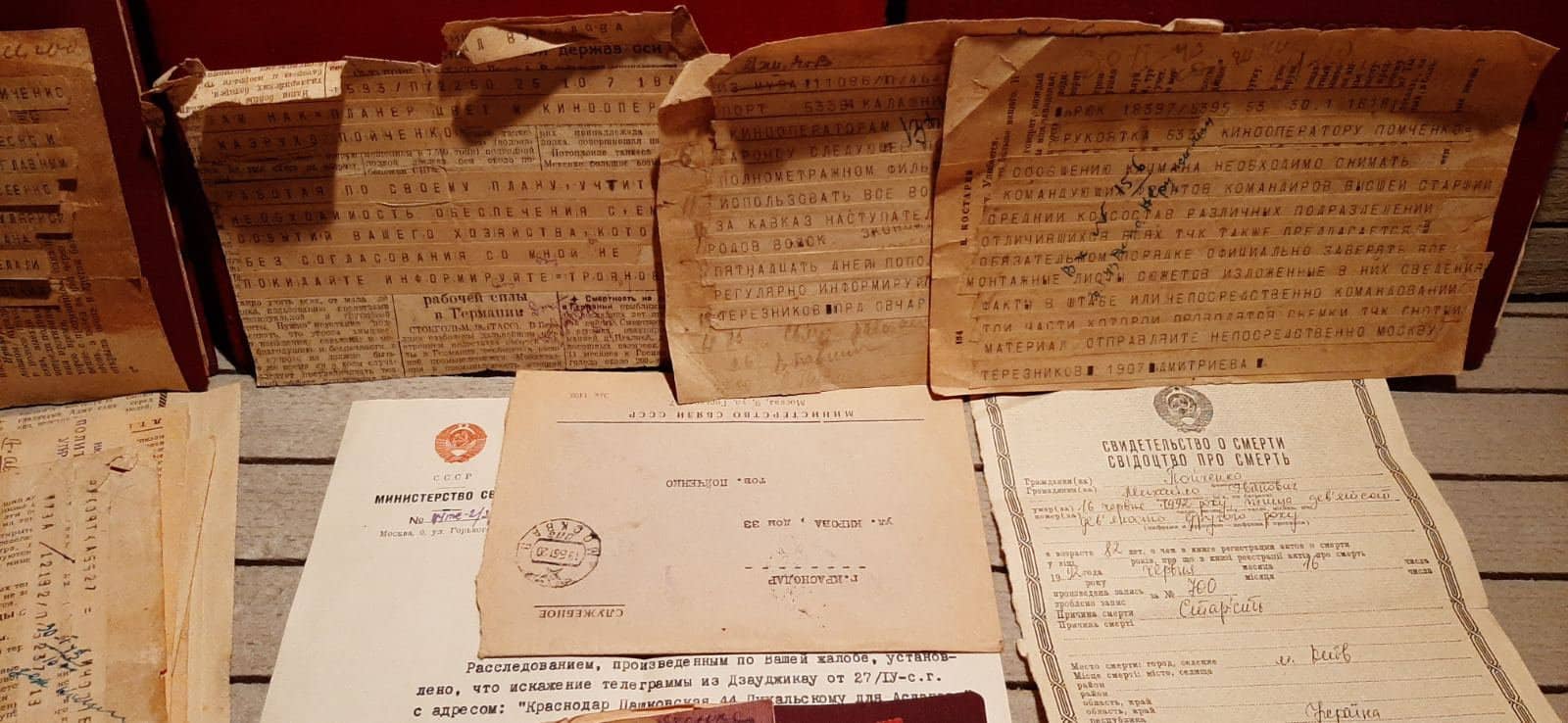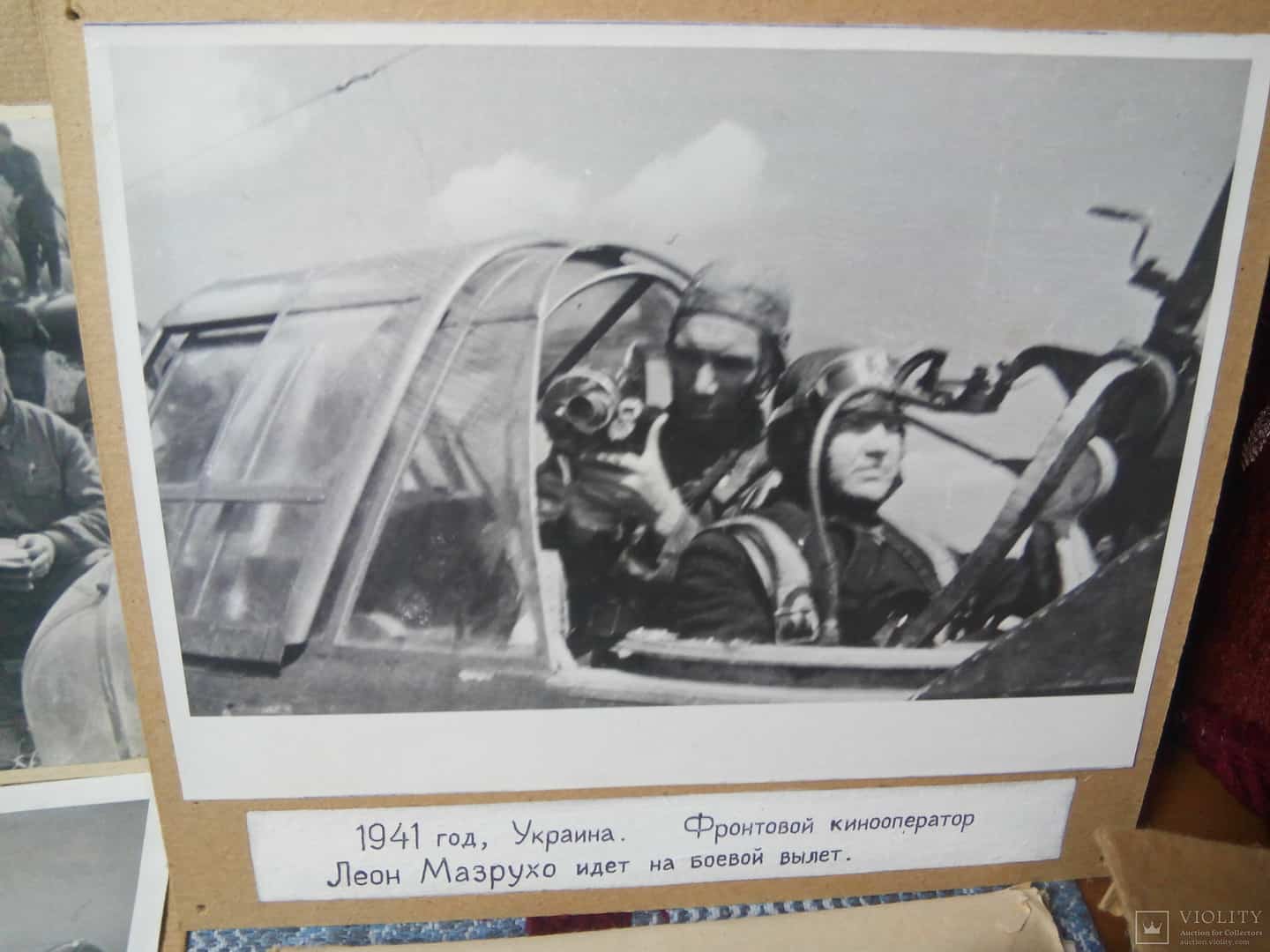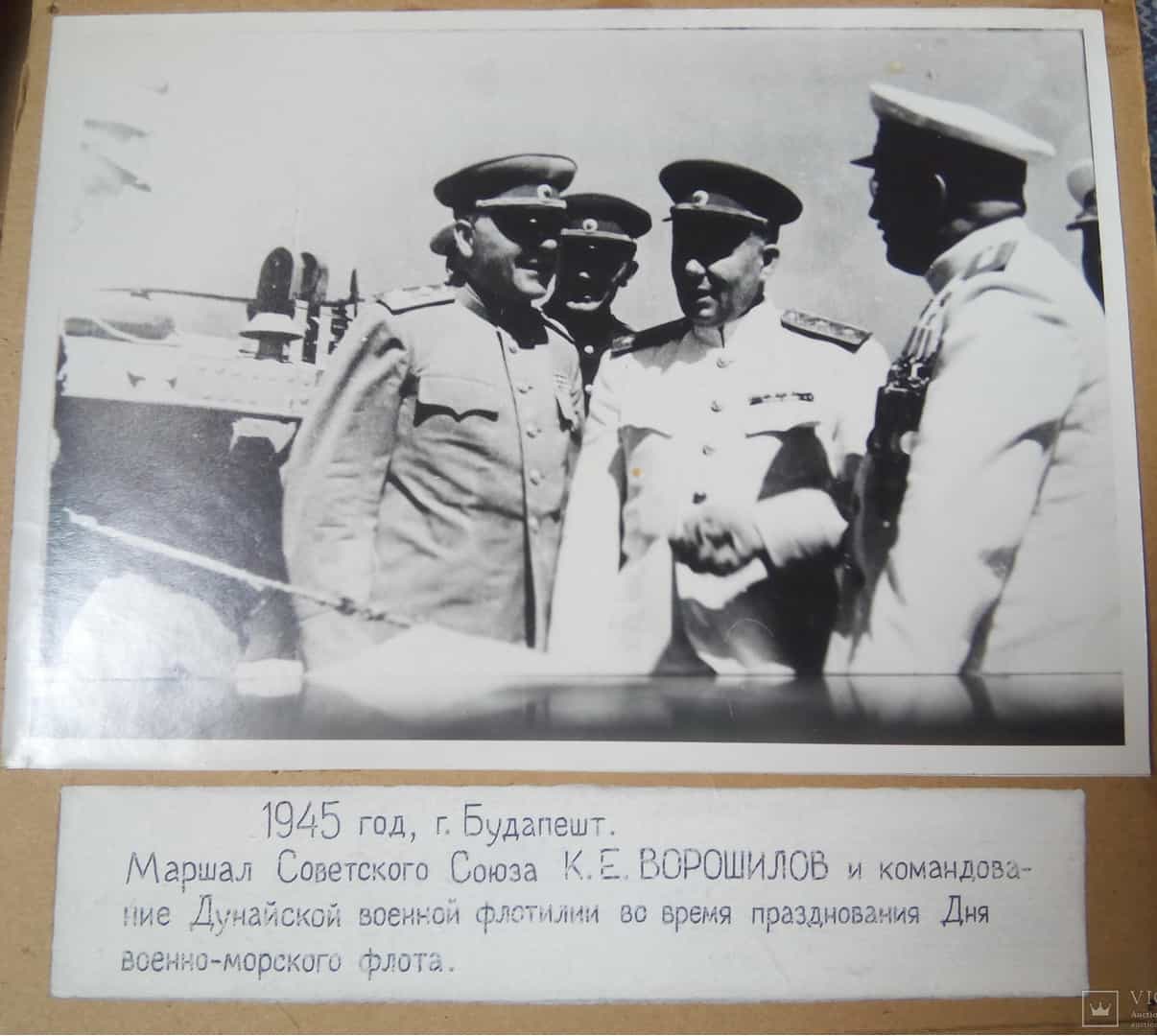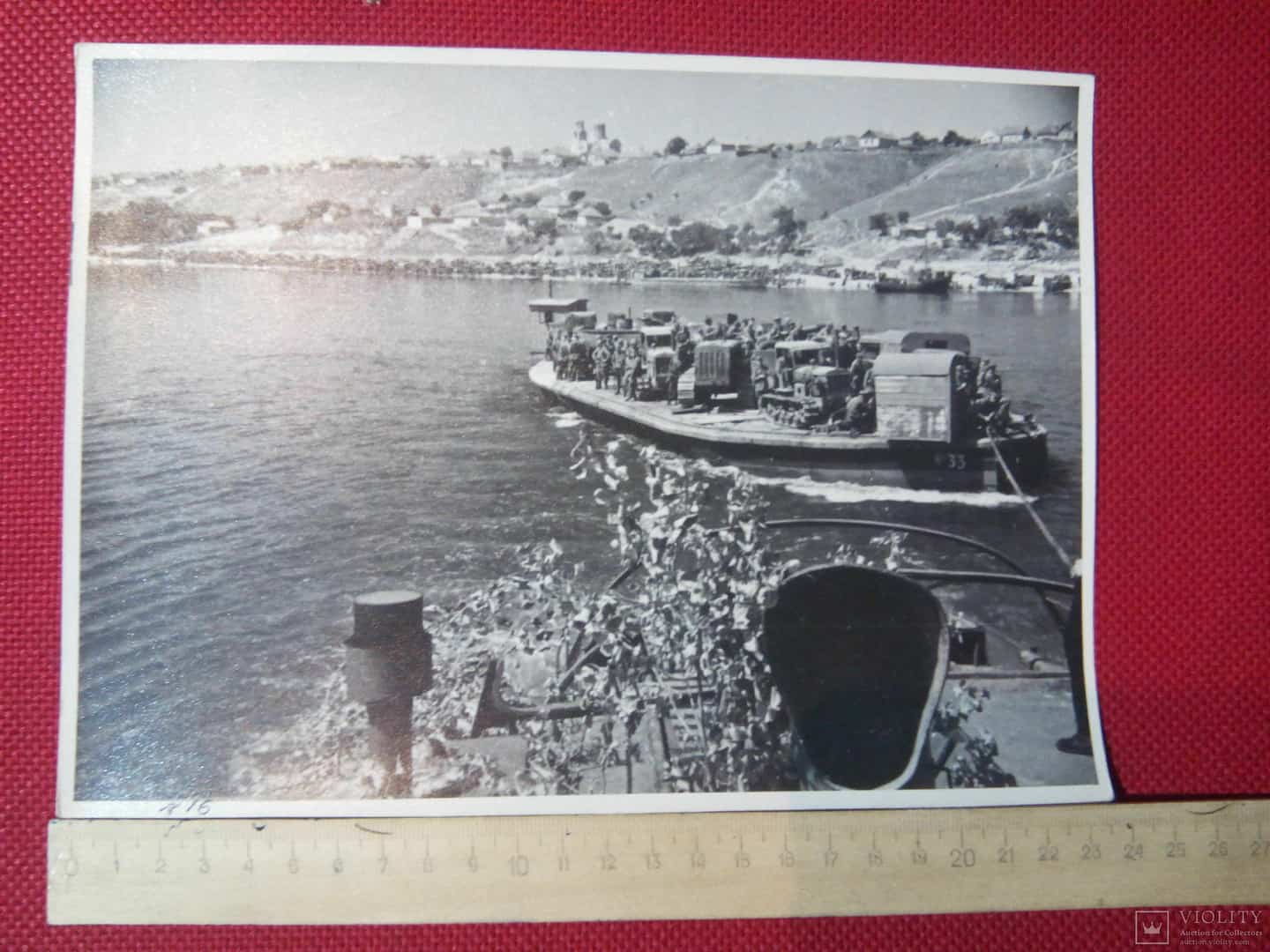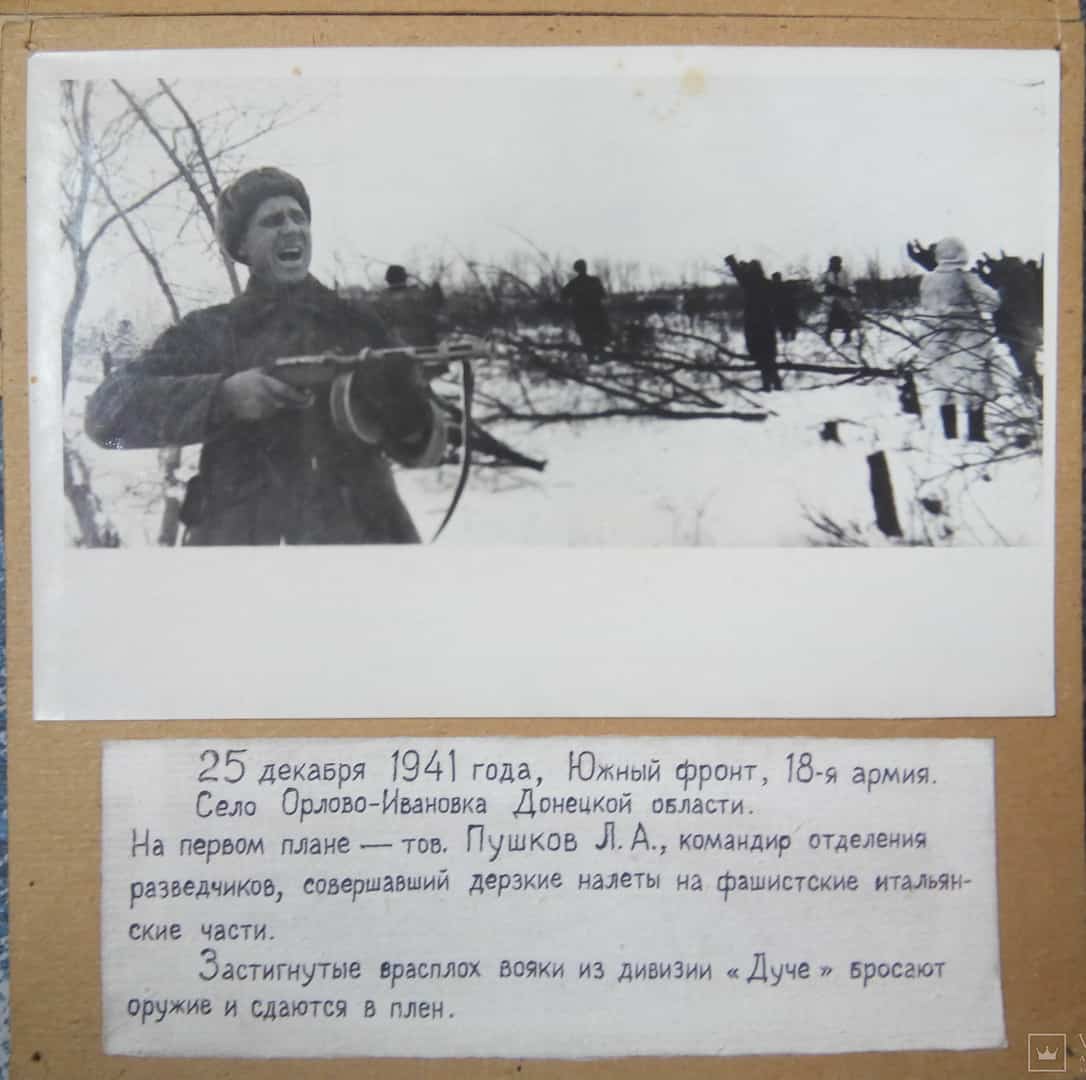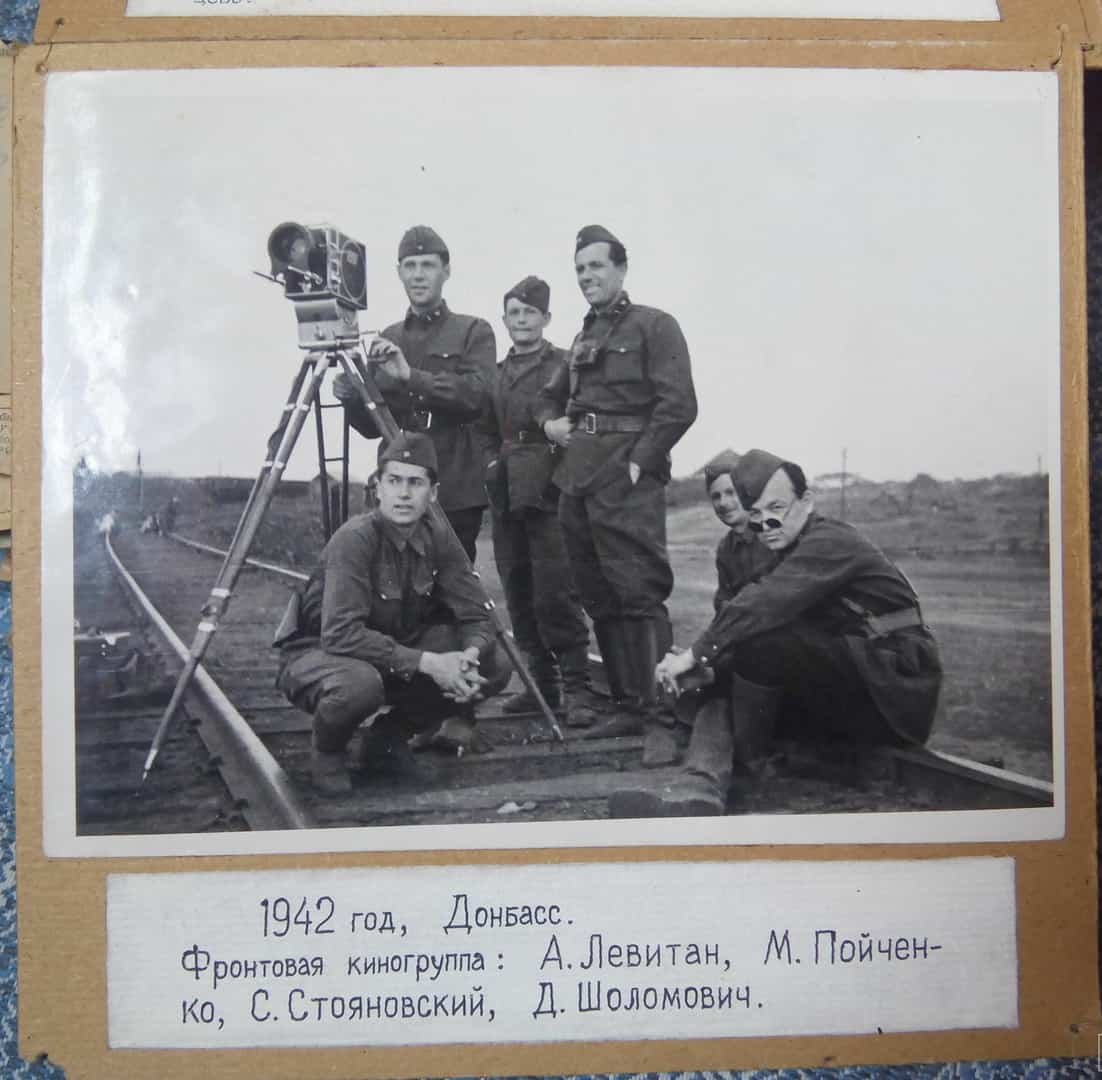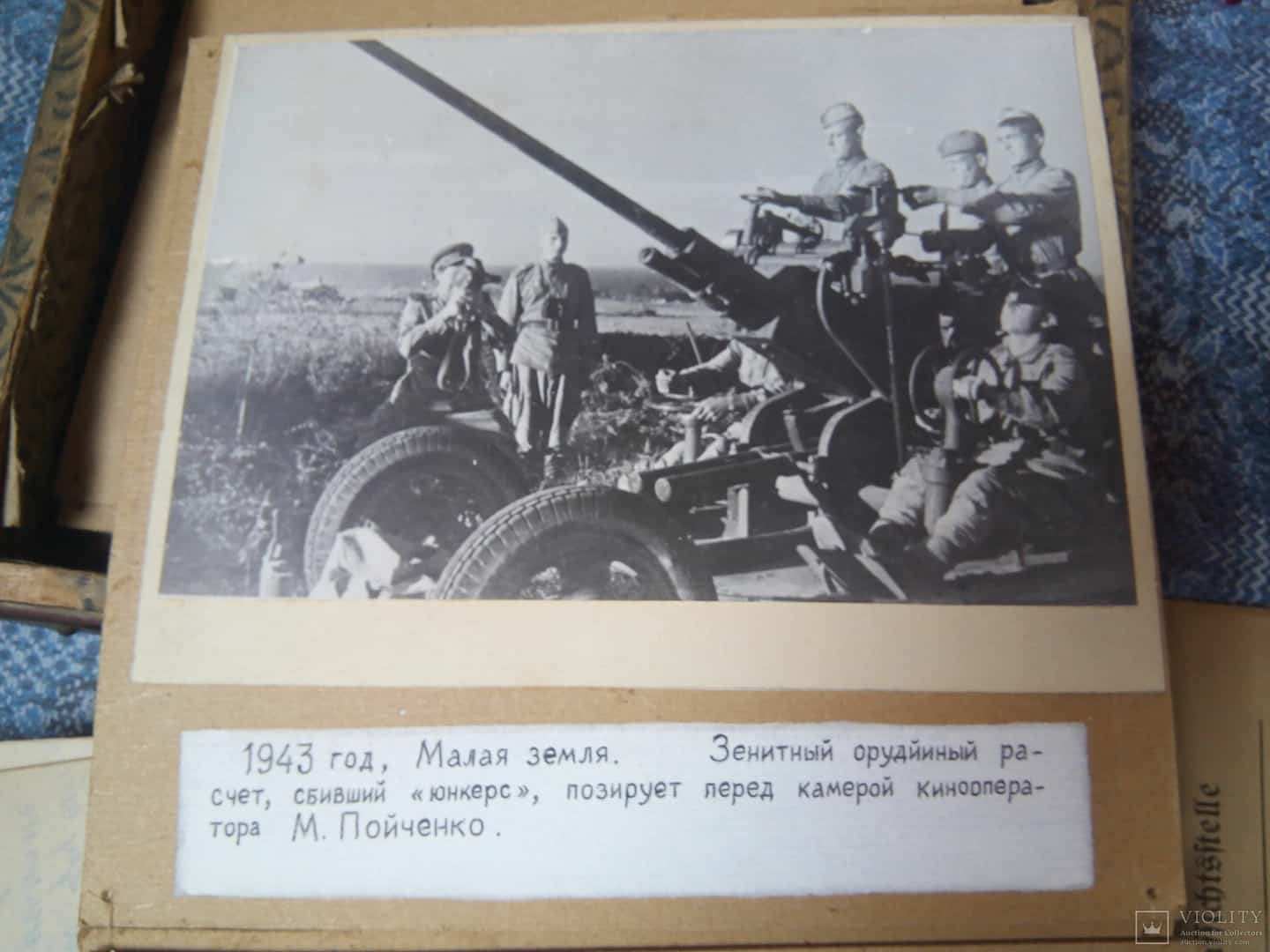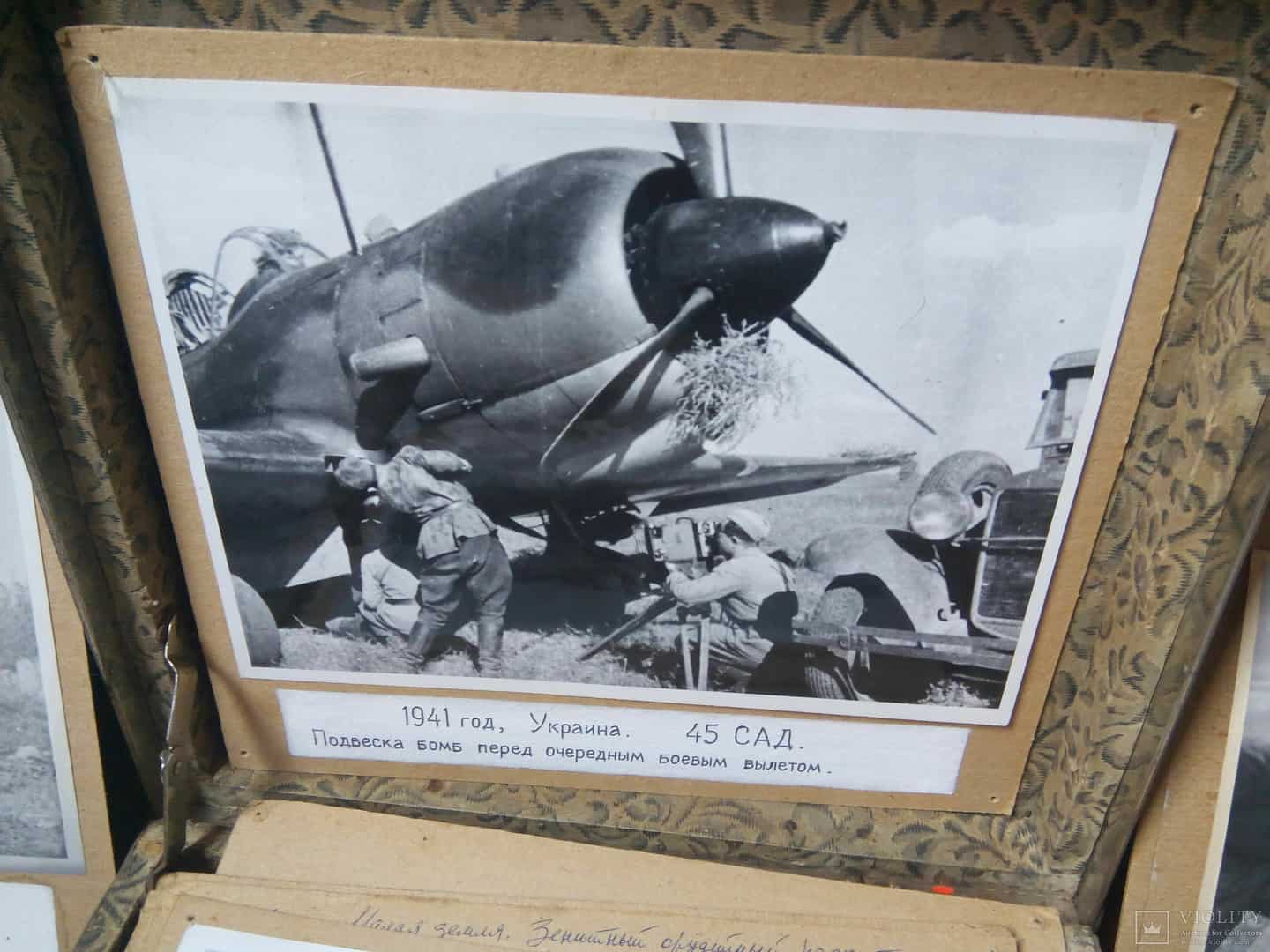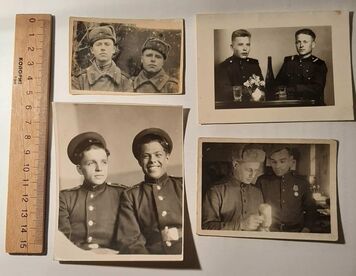WW2 private museum photo collection of front-line soviet cinematographer Poychenko, German aircrafts
Shipping information
Please sign in so that we can notify you about a reply
Description
Let me introduce your attention the amazing private collection of Poychenko Mykhaylo Ivanovych (1909-1992) - Ukrainian famous and well-known cinematographer. A participant of the German-Soviet war (WWII). Honored Artist of Ukraine (1988).
This is really a museum piece of art, one of a kind and unique collection with exclusive original details on ww2 photos (buttles, prisoners of war, crossing the Dnieper 1941, captured German aircrafts, sinking ships, BREZHNEV, VOROSHILOV etc)
Photo condition investigate according to the photos. Very Good! The lot consists of a huge number of photos from both the military WW2 (about 70) and post-war years (about 400, including family, theatre, Paris, Roma, festivals, some nude). It is not possible to display everything. In addition to the photo, there are photocopies and originals of ww2 telegrams, orders, passes (photocopies with L. BREZHNEV’s signature), accompanying documents, etc., correspondence from the fronts with the leadership and relatives (it is classified as SECRET, IN PERSON), award and congratulatory letters and telegrams. Most of the documents and photos are folded into a briefcase, possibly from some kind of German photographic equipment.
Chronology. Front-line cameraman during the Great Patriotic War (WW2). From the fall of 1941 - operator of the film group of the Southern Front;
From September 1942 - operator of the film group of the North Caucasian Front;
From 1944 - operator of the film group of the 2nd Belorussian, 2nd Ukrainian fronts.
“Comrade Poichenko is a talented war correspondent for newsreels. Participated in the filming of a number of important operations on the Black Sea coast.
He filmed major landing operations twice: in May 1943 he worked at Novorossiysk (a city in southern Russia, in the Krasnodar Territory), in January 1944 he accompanied the first landing groups that landed on the Kerch Peninsula. Each time he gave high quality material of great documentary value.
During the assault on Novorossiysk, he filmed the actions of the landing groups seizing the port from the side of the bay. Very interesting footage shot in the region of Novorossiysk by cameramen A. Levitan, M. Poychenko. They show that the German invaders, who broke through to Novorossiysk, did not succeed in becoming its masters. The operators conducted a series of filming in the area of the largest cement plants, which the enemy could not take possession of. They showed the outskirts of the working village, where our soldiers were holding the defense with mortar and machine-gun fire.
In 1944 he was an active participant in the filming of the USSR liberation.
Filmed in the battle formations of the Special Maritime Army units, in the marine brigades and in the troops of the 4th Ukrainian Front.
Filmed a number of interesting episodes during the battles on the outskirts of Sevastopol. Among [the footage] stand out: footage of a tank attack, filmed from a trench on the front line, and footage of the offensive of infantry battle formations, in which artillery can be seen firing direct fire at the Germans.
Comrade Pochenko deserves a government award.
Deputy Director of the Central Order of the Red Banner of the Documentary Film Studio L. Saakov.
1945 - 1950 - operator of the Lithuanian newsreel studio.
In 1950 - 1957 - cameraman of the Rostov newsreel studio.
In 1957 - 1986 - operator of the Lviv bureau "Ukrkinohronika".
In 1965 he was awarded the 1st prize of the All-Union Film Festival for the documentary film "Ships Don't Die".
There are little-known photographs illustrated L. BREZHNEV’s work during the WW2 in 1942-1943 in the lot. The photos were made by front-line cinematographer. 1942-1943 Poychenko was a member of the Southern Front film group, the film group in its work closely interacted with the political department of the Army. Comrade BREZHNEV (future general secretary of USSR) worked in the political department of the 18th Army together with Poychenko.
From M. Troyanovsky's report to the Central Newsreel Studio dated May 18, 1943: On May 17, operator Comrade Poichenko was sent to Malaya Zemlya.
The listing presents 49 big original ww2 photos 18*13.5 cm with the master Poychenko handwritten describes:
Jampol town, 1941, first ww2 days. “Ranging”. Cameraman Poychenko
Ukraine, 1941. On the war roads.
South front, 1941. Crossing of troops to the left bank of the Dnieper
Ukraine, 1941. The air craft battle (air force unit 45 САД)
South front, 1941. Editing sheet for the plot. The cameraman Poichenko and the driver Labunchenko.
Ukraine, 1941. Front-line cameraman Leon Mazrukho is going on a combat mission
Ukraine, 1941. Front-line cameramen Poychenko, Kairov
Ukraine, 1941. Issue of a combat sheet in the air unit 45 САД
Ukraine, 1941. Poychenko is making (movie) the preparations for the next combat mission in the 45th Infantry Air Division (45 САД=IAD)
The South Front, 18th Army, 25th of December, 1941. Orlovo-Ivanovka village, Dnetsk region. Foreground: Comrade Pushkov, the reconnaissance squad commander, who has carried out daring raids on German Italian units. Fighters from the "Duce" division, taken by surprise, drop their weapons and surrender.
Rostov-on-Don, 1941. The first release
Ukraine, 1941. A group of Soviet soldiers at an enemy communications plane captured together with the crew.
Donbass, 1941. Residents of the liberated village is telling reporters about the atrocities of the invaders
Donbass, 1941. In the liberated village.
Ukraine. The suspension of the bombs was preceded by the next combat mission.
Donbass, 1942. Capture of the Germans from the Romanian division in the Debaltsevо area.
Donbass, 1942. Frontline film group: Levitan, Poichenko, Stoyanovskiy, Sholomovich
1942. Сaptured Romanians from the Antonescu’s division
Spring, 1943. Cape Khako near Novorossiysk. The head of the political department of the Separate Primorsky Army (18 A), regimental commissar of the guard, Colonel L.I. BREZHNEV, with a group of land-poor officers after being presented with party cards and government awards.
1943. Cameraman Poichenko. Interview after the liberation of Taman
Chausy village, 1944. Ferry crossing of troops to the left bank of the Dnieper
Malaya Zemlya, 1943, cameraman Poychenko
Malaya Zemlya, 1943. The command "Air!" - another raid of enemy aircraft
Dugout of commander Major General Grechkin in Malaya Zemlya (Colonel L.I. BREZHNEV is on the left)
А group of Kunikov’s paratroopers a few days before the landing on Malaya Zemlya
Оur troops liberated Rostov-on-Don city
Ships that have landed troops on Malaya Zemlya
Budapest, 1945. Day of the Navy on the Danube Flotilla. Klement Efremovich VOROSHILOV and the command of the Danube flotilla
Near Novorossiysk town, 1943. The military surgeon Perestenko’s Field operation theatre
1943. One more german pirate is going to the bottom of the Black Sea
Near Novorossiysk town, 1943. We took the “tongue”
Malaya Zemlya, 1943. Anti-aircraft gun crew that shot down the Junkers is posing in front of the camera of operator Poychenko
Malaya Zemlya, 1943. Delivery of ammunition to the front line of defense
Malaya Zemlya, 1943. Delivery of food and swamp water to the front line
Black sea, 1943. А Soviet ship is dying
Near Novorossiysk town, 1943. А seriously wounded soviet ship delivering food to the paratroopers to Malaya Zemlya, is waiting for help
Gelendzhikt town, 1943 - Thick cape. А group of journalists and photojournalists of front-line newspapers - Grigoriev, Alpert, Khaldei, Galin and the poet Safronov, composer Soloviev-Sedoy, novelist Pavlenko
1944. A frame from a front-line movie entitled "Был Мессершмидт - стал мусоршмидт"
Cape Utrigi near Anapa, 1944. On the second day after release. Downed German plane, the grave of the pilot and the hospital ship "Fabricius", which burned down after torpedoing
1944. А group of frontline operators in liberated Yalta - Litvin, Kotlyarenko, Sholomovich, Arons, Poichenko
Budapest, 1945. Marshal of the USSR Voroshilov K.E. and the command of the Danube military flotilla during the Day of the navy celebration
Budapest, 1945. Day of the navy. Cinematographer Julius Kun
Budapest, 1945. Film group on the territory of Buda Castle
Budapest, 1945, February. A group of liberators in the territory of Buda Castle, etc…
ATTENTION! The lot includes the original ww2 handwritten surviving assembly sheets marked "Secret" №6. The letter fragment: «Filmed on December 25, 1941 in the 18th army division 296 in the villages ... Film 90 meters (snow, cloudy), operator M.M. Poichenko ... The soldiers liberated a number of settlements... 75 Italian soldiers and officers of the expeditionary corps fled in panic... laid down their armors and surrendered... ".
Poychenko’s own photo of ww2 documents, signed by Colonel L.I. BREZHNEV 09.09.1942
5 originals of front-line telegrams, 1943. From the text of front-line telegram 01-24-1943 “Cameramen: it is necessary to show the battles for the Caucasus and all offensive operations. Save on film. There will be no replenishment… "
Very personal front-line handwritten letter 10-20-1943 with closed information addressed to Katsman Roman Grigorievich (Deputy Head of the Main Directorate for the production of documentary films of the Committee for Cinematography in Moscow).
He worked as a cameraman at the Lithuanian and Rostov film studios, the Lviv Corps, and in 1962–1986 at Ukrkinochronika.
Congratulatory letter on the 60th anniversary of 10-28-1969 from V.L. Kovalchuk, documentary film operator, laureate of the Stalin Prize 1941
Greeting card from the Presidium of the Board of the Ukrainian Cinematographers Society in a folder with metal engraving on the top
1976 - Diploma for fruitful work on the development of Soviet cinema from Presidium of Verkhovna Rada of USSR
Certified copy of death certificate 06-19-1992 with wet seal
Сertificate for receiving ashes after cremation 06-20-1992 original
Many trade union and membership cards including ww2 period
He was awarded two Orders of the Patriotic War II degree (1945, 1985), the Order of the Badge of Honor (1971) and the Order of the Red Banner of Labor (1981, there is a congratulatory telegram from the board of the USSR Union of Cinematographers), as well as medals. He was a member of the Union of Cinematographers of Ukraine.
Diploma of the Verkhovna Rada of Ukraine is present in the lot. He was a member of the Union of Cinematographers of Ukraine.
He made the following films: "Soviet Lithuania" (1950), "Live, Ukraine!" (1957), "In a single family" (1958), "Ukraine. 1960 "(1960, co-author)," Vladimir Gurgal"(1961)," Magicians "(1962)," Hello, Gano Dmitrievna! " (1964), "Ships do not die" (1965, co-author. First Prize of the Zonal Review. Leningrad, 1966), "People, tastes, time" (1968), "Between the free" (1970), "Ukraine, the land, People "(1970)," Face to Fire "(1971, Diploma of the All-Union Film Festival on the Worker's Theme, Gorky, 1972)," Poem about the Donetsk Region "(1974, co-author)," Five Songs about Communists "(1975, Special Jury Prize of the IX All-Union Film Festival. Frunze, 1976), "On the whole breadth of the soul" (1975, Honorary Diploma of the Jury of the XIX International Film Festival. Leipzig, 1976), "City of Workers' Glory" (1976), "Mary of the Little Land" (1980, co-author), "Golovykha", "Potter", "Without a statute of limitations" (1981), "Ballad of the Forest Front" (1986), "Ivan Franko and World Culture" (1987). His front-line plots were used in the series "The Great Patriotic War" (1978-1980).
More from this vendor
Reviews
Shipping and Policies
This store is integrated with the Western Bid™ e-commerce platform, and Western Bid, Inc. is the Merchant of Record for all purchases made in this store. Therefore, you will see "WESTERN BID" listed as the payee on your PayPal account and credit card statement.
I accept PayPal or Credit Cards only.
• Your items will be made and shipped only after the payment is cleared.
• If you don't have Paypal account and would like to pay with your Credit Card, check this step-by-step tutorial on PayPal:
https://www.paypal.com/webapps/mpp/pay-online
Your order will be shipped only after the payment is cleared. This means if you pay via Paypal e-checks there could be delay in 3-5 business days. You can check the status of your payment in your Paypal account or in the correspond invoice here on Lavky.
All the items in the order will be securely packed and shipped within 1-3 working days of payment.
Some items may take longer. If the processing time is more than 7 days, it is clearly stated in the product description.
Delivery Address:
• Please make sure your shipping address is correct at the checkout.
We will ship your order to the address specified on Lavky.com checkout, and not to the address specified on Paypal.
Terms of Delivery
We always ship parcels with a tracking number. We will update you on the tracking number once your order has been prepared and shipped.
Usually delivery takes between one a half and four weeks.
Please note that delivery times may vary depending on your location and customs clearance, so we cannot guarantee the exact time of arrival.
Here are the approximate delivery times:
- USA: 1.5 - 2.5 weeks
- Canada: 2-3 weeks
- Europe: 1-2 weeks
- Australia: 2-3 weeks (sometimes longer, depending on Australian customs)
- The rest of the world: 2-3 weeks
Delivery method
We ship all the parcels from Ukraine (from our logistics centers in Kyiv and Chernivtsi) via international services (FedEx, UPS) in two stages.
First a parcel is sent by express delivery service to Europe, and then, it is shipped by air mail to the United States, Canada or Europe.
You can see the movement of the parcel by a tracking number only in the second stage - 4-6 days after sending your order from our center. We estimate the delivery time to 12-18 days.
Express delivery is available only on individual request. Please contact us if you need Express delivery before placing an order so we can update shipping options.
Customs duties and taxes
Customers are responsible for any fees, taxes and duties related to delivery and ordering products to their country of destination.
Packaging
Your order will arrive in a safe cardboard box, with due packaging and protection from damage.
I want my clients to be happy, so let me know if you have any problems.
If you are not satisfied with your items / service for any reason, please contact me with the problem before leaving a feedback.
